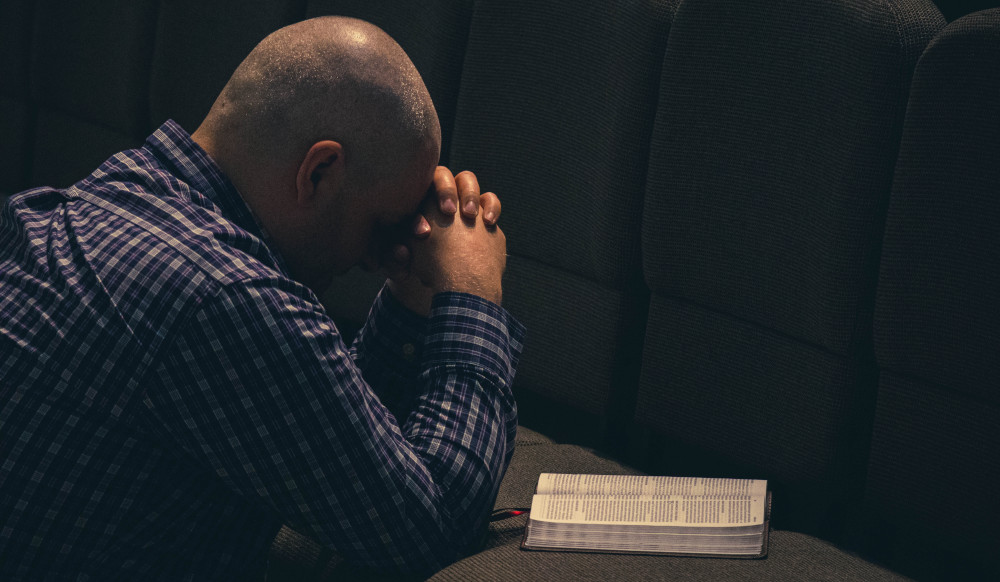I remember the day I learned about godly sorrow. I was sitting in my study, reading through Paul’s letters to the Corinthians. The weight of his words in 2 Corinthians 7:10 (NKJV) hit me:
“For godly sorrow produces repentance leading to salvation, not to be regretted; but the sorrow of the world produces death.”
I realized that for years, I had confused feeling bad about my sins with genuine godly sorrow. The difference between these two types of sorrow became clear as I dug deeper into Scripture and witnessed transformations in people’s lives through true repentance.
Key Takeaways
- Godly sorrow leads to genuine repentance and positive life change.
- Worldly sorrow focuses on consequences and leads to death.
- True repentance involves both emotional response and practical action.
- Godly sorrow produces seven distinct positive outcomes.
- Self-judgment through godly sorrow helps us avoid divine judgment.
What is Godly Sorrow?

Godly sorrow goes far beyond mere regret or feeling bad about getting caught. It’s a deep, spiritual grief that comes from recognizing how our sin affects our relationship with God.
Worldly sorrow focuses on consequences and self-pity. Godly sorrow produces genuine repentance and lasting change.
When we experience godly sorrow, we’re not just sorry because we got caught or because we face consequences. We’re sorry because we’ve violated God’s trust and damaged our relationship with Him. This kind of sorrow leads us toward restoration rather than despair.
The Seven Fruits of Godly Sorrow

In 2 Corinthians 7:11, Paul outlines seven distinct outcomes that godly sorrow produces:
- Earnestness – A serious commitment to change.
- Eagerness to clear yourself – Desire to make things right.
- Indignation – Holy anger toward sin.
- Fear – Proper reverence for God.
- Longing – Deep desire for restoration.
- Zeal – Passion for righteousness.
- Justice – Readiness to correct wrongs.
These outcomes show that godly sorrow isn’t just an emotional response. It produces practical action and real change in our lives.
The Corinthian Church Example

The Corinthian church provides a powerful case study of godly sorrow in action. Paul had to confront serious sin in their congregation.
A man was having a relationship with his stepmother (1 Corinthians 5:1). Initially, the church was proud of their “tolerance,” but Paul’s stern rebuke led them to godly sorrow.
Their response demonstrates the transformative power of godly sorrow:
- They took decisive action to address the sin.
- They separated themselves from the unrepentant sinner.
- They later showed forgiveness when true repentance occurred.
- The entire congregation learned valuable lessons about holiness.
The Purpose of Church Discipline

Church discipline isn’t about punishment – it’s about restoration. When Paul instructed the Corinthians to remove the unrepentant member, his goal was redemption.
This teaches us important principles about handling sin in the church:
- Confrontation should come from love, not anger.
- Temporary separation can lead to spiritual awakening.
- The goal is always restoration.
- Both the individual and community need protection.
Self-Judgment: The Way Out

One of the most powerful principles I’ve learned about godly sorrow is found in 1 Corinthians 11:31-32 (NKJV):
“31 For if we would judge ourselves, we would not be judged. 32 But when we are judged, we are chastened by the Lord, that we may not be condemned with the world.”
This self-judgment involves:
- Honest evaluation of our actions.
- Acknowledgment of sin.
- Willingness to change.
- Acceptance of responsibility.
- Active steps toward restoration.
Practical Steps to Embrace Godly Sorrow
- Acknowledge sin honestly before God.
- Focus on the relationship damage rather than consequences.
- Take specific actions to correct wrongs.
- Accept responsibility without excuses.
- Seek accountability and support.
- Learn from the experience.
- Move forward in grace.
Conclusion: The Gift of Repentance
Godly sorrow is actually a gift from God. It’s His way of drawing us back to Himself when we’ve strayed. Through godly sorrow, we experience:
- Genuine heart change.
- Restored relationships.
- Spiritual growth.
- Greater intimacy with God.
- Freedom from sin’s power.
Remember, God’s not willing that any should perish, but that all should come to repentance (2 Peter 3:9). Godly sorrow is His loving way of guiding us back to the path of life.
Next time you feel conviction over sin, don’t run from it or wallow in worldly sorrow. Embrace godly sorrow as the path to true repentance and lasting change.
It’s not always comfortable, but it leads to life, peace, and deeper relationship with God. The journey through godly sorrow to repentance isn’t easy, but it’s worth it.
I have experienced both worldly and godly sorrow. I can testify that godly sorrow, though painful for a season, produces lasting joy and freedom that you’ll never regret.
Frequently Asked Questions
Q. What’s the difference between godly sorrow and worldly sorrow?
A. Godly sorrow focuses on how sin affects our relationship with God and leads to positive change. Worldly sorrow focuses on consequences and self-pity, leading to despair.
Q. Can godly sorrow lead to depression?
A. No, genuine godly sorrow leads to hope and positive change. If you’re experiencing depression, seek pastoral counsel and professional help.
Q. How do I know if my sorrow is godly?
A. Look for the seven fruits Paul mentioned. Earnestness, eagerness to clear yourself, indignation, fear, longing, zeal, and readiness for justice.
Q. Is godly sorrow necessary for salvation?
A. While conviction of sin is part of coming to Christ, salvation is by grace through faith. Godly sorrow is part of the Christian’s ongoing sanctification process.
Q. How long should godly sorrow last?
A. Once genuine repentance occurs and forgiveness is received, move forward in joy. Learn from your experience but do not dwell on the sorrow.






